Mary-Jane Duffy – 31 October, 2017
Where our bodies hit the world uses the metaphor of the repetitive task. In 28 days Justine is seen in front of a blank wall trying to make a grid to represent the days of her menstrual cycle with twenty-eight post-it notes. The notes won't stick to the wall and one by one flutter to the ground. She picks them up and sticks them on again. And for one moment in the 9 minute film they are all on the wall. But then another falls, and so it continues.
In 2016 Miranda July gave a performance in Wellington about her work and life as part of the Wellington International Festival of the Arts. At the end in the question time, a woman remarked that Miranda seemed fragile, and that her work was about fragility. Miranda agreed, ‘Vulnerability is a superpower’.
I was reminded of this and the idea of radical softness (see Lora Mathis) when I saw Justine Walker‘s latest exhibition Where our bodies hit the world at play_station in Wellington. The exhibition presents her experience of unsuccessful fertility treatments and pregnancies in order to talk about trauma and its associated shame.
The exhibition builds on a previous body of work, For Sale: baby shoes, never worn, shown at Toi Poneke in 2016 that explored the experience of loss—the absence of the longed-for child. The video and photographic works all used her body in various guises—as balaclava-clad heads, a profile portrait with a prosthetic ear, and a full length portrait in a fat-suit. In the video works her hands or face were seen doing, undoing and redoing a series of repetitive tasks: blowing up balloons, covering and erasing a surface with curly script, and sorting 100s and 1000s into piles. The repetition was meditative and mesmerising but ultimately without purpose.
Where our bodies hit the world also uses the metaphor of the repetitive task. In 28 days Justine is seen in front of a blank wall trying to make a grid to represent the days of her menstrual cycle with twenty-eight post-it notes. The notes won’t stick to the wall and one by one flutter to the ground. She picks them up and sticks them on again. And for one moment in the 9 minute film they are all on the wall. But then another falls, and so it continues. The falling post-it notes, together with the gorgeous galaxy of freckles and moles across Justine’s naked back, create an image of persistence and resilience—but also of vulnerability.
In Screw up, another video work, her hands are seen screwing up and smoothing out an image of her naked self. As the hour-long video progresses, the paper on which the image is printed becomes progressively more degraded and ragged so that, by the end, it is a soft shredded shadow of its former self. But still it remains. Breathe is a series of ten self-portraits. Each one is slightly less focussed than the next. There’s one I can’t keep my eyes off. It’s one of the most blurry in the series. Something terrible has happened to this woman—she has received bad news, has had a bad experience, is having a terrible time. It’s all there on her blurry face and I can’t stop looking at her.
While I’m at the exhibition, someone comes into the space and apologises repeatedly when she causes one of these self-portraits to tip over. But they’ve been installed with this kind of precariousness so that as you walk past, they could float to the floor. This adds something to them. This woman is traumatised and she may fall over but as happens in the gallery space, someone picks her up. These moments temper the potential weight of the subject matter.
Something Scandinavian about Justine’s restrained use of colour made me look up the self portraits of Elina Brotherus who works in the same territory. Her Annunciation is a series of portraits of a woman undergoing fertility treatment. And while these images with their pared-back beauty and pathos are incredibly beautiful and moving, they tell me how I will feel about them. That I’ll be sorry for this woman who hasn’t been able to conceive. I prefer Justine’s approach. She uses her vulnerability superpower to create poetic images with her own minimalist aesthetic that lightly discusses this tender vein of experience. I watch this woman holding back tears, sticking post-it notes to the wall and screwing up images of herself, and because she can, it’s somehow uplifting.
Mary-Jane Duffy
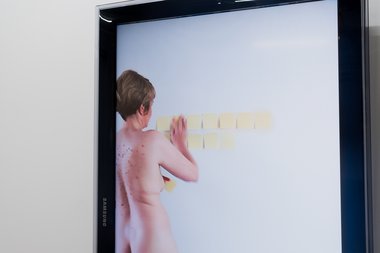
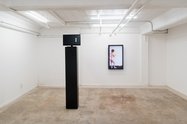
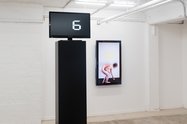
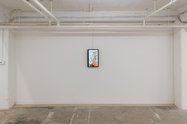
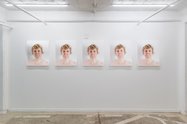
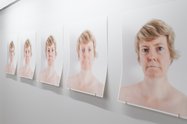
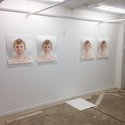
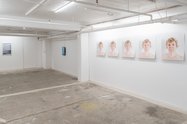
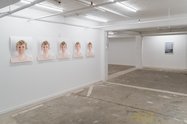
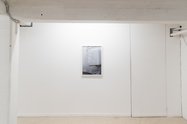
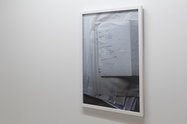
 Advertising in this column
Advertising in this column Two Rooms presents a program of residencies and projects
Two Rooms presents a program of residencies and projects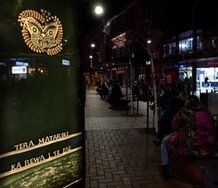
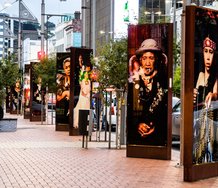
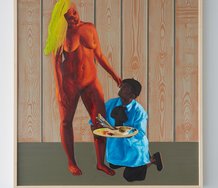
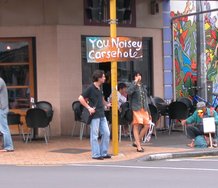
This Discussion has 0 comments.
Comment
Participate
Register to Participate.
Sign in
Sign in to an existing account.